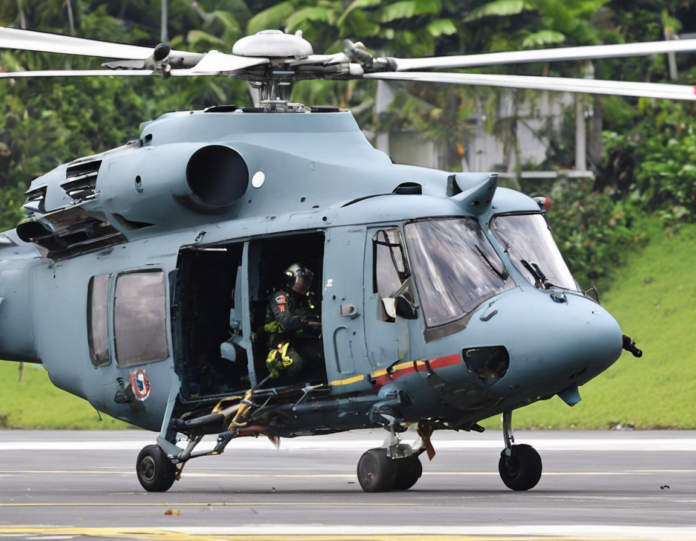On July 25, 2021, two Malaysian Navy helicopters were involved in a mid-air collision during a training exercise. The incident took place near the coast of Sabah, a state in Malaysia located in Borneo. The helicopters involved in the collision were an AgustaWestland AW139 and a Nuri S-61A-4, both of which are utilized by the Royal Malaysian Navy for various missions, including search and rescue operations, maritime patrol, and transport missions.
The collision resulted in the unfortunate loss of four crew members, including two pilots and two air crew members. The Malaysian Navy immediately launched a search and rescue operation to locate the missing crew members and provide any necessary assistance.
This incident has raised concerns about the safety protocols and training procedures within the Malaysian Navy, as well as the overall maintenance of their fleet of helicopters. Investigations are ongoing to determine the cause of the collision and to prevent similar accidents from occurring in the future.
Factors Contributing to the Collision
Several factors may have contributed to the mid-air collision involving the Malaysian Navy helicopters. These factors can include:
-
Communication Errors: Miscommunication or a lack of proper communication between the two helicopter crews could have led to the collision.
-
Pilot Error: Human error, such as misjudging distances or failing to adhere to standard operating procedures, could have played a role.
-
Weather Conditions: Adverse weather conditions, such as poor visibility or strong winds, may have made it difficult for the pilots to navigate safely.
-
Equipment Malfunction: Technical issues or malfunctions with the helicopters’ systems could have impeded the pilots’ ability to control their aircraft effectively.
Safety Measures and Training Protocols
In response to the collision, the Malaysian Navy is likely to review and reinforce its safety measures and training protocols to ensure the continued safety of its personnel and equipment. Some of the measures that may be implemented or enhanced include:
Enhanced Communication Protocols
-
Implementing clearer communication protocols between helicopter crews and ground control to avoid misunderstandings.
-
Emphasizing the importance of effective communication and coordination during training exercises and missions.
Improved Pilot Training
-
Providing additional training for pilots on spatial awareness, collision avoidance techniques, and emergency maneuvers.
-
Conducting regular simulations and scenario-based training to enhance pilots’ ability to respond to unexpected situations.
Maintenance and Inspection Procedures
-
Enhancing maintenance procedures to ensure that all aircraft are in optimal condition before each flight.
-
Implementing more rigorous inspection protocols to identify and address any potential issues that could compromise flight safety.
Lessons Learned from the Incident
The collision involving the Malaysian Navy helicopters serves as a sobering reminder of the risks and challenges associated with military aviation operations. It underscores the importance of vigilance, preparedness, and adherence to safety protocols to prevent such tragic incidents from occurring in the future.
Importance of Continuous Training and Evaluation
-
Regular training and evaluation of pilots and air crew members are essential to maintain their skills and readiness for diverse operating conditions.
-
Conducting thorough debriefings and reviews after training exercises and missions can help identify areas for improvement and prevent similar accidents in the future.
Emphasis on Safety Culture
-
Fostering a culture of safety within the Malaysian Navy that prioritizes risk awareness, responsibility, and accountability among all personnel.
-
Encouraging open communication and reporting of safety concerns to address potential risks proactively.
FAQs
1. What type of helicopters were involved in the collision?
– The Malaysian Navy helicopters involved in the collision were an AgustaWestland AW139 and a Nuri S-61A-4.
2. How many crew members were lost in the incident?
– The collision resulted in the loss of four crew members, including two pilots and two air crew members.
3. What missions are Malaysian Navy helicopters typically used for?
– Malaysian Navy helicopters are utilized for various missions, including search and rescue operations, maritime patrol, and transport missions.
4. What factors may have contributed to the collision?
– Factors such as communication errors, pilot error, adverse weather conditions, and equipment malfunction may have contributed to the mid-air collision.
5. What safety measures and training protocols are likely to be enhanced following the incident?
– Enhanced communication protocols, improved pilot training, and stricter maintenance and inspection procedures are some of the measures that may be implemented or reinforced.
In conclusion, the collision involving Malaysian Navy helicopters highlights the inherent risks involved in military aviation operations and emphasizes the critical importance of safety, training, and oversight to prevent such tragedies in the future. Through a thorough investigation, implementation of corrective measures, and a commitment to continuous improvement, the Malaysian Navy can strive to enhance the safety and effectiveness of its helicopter operations.


Recent comments